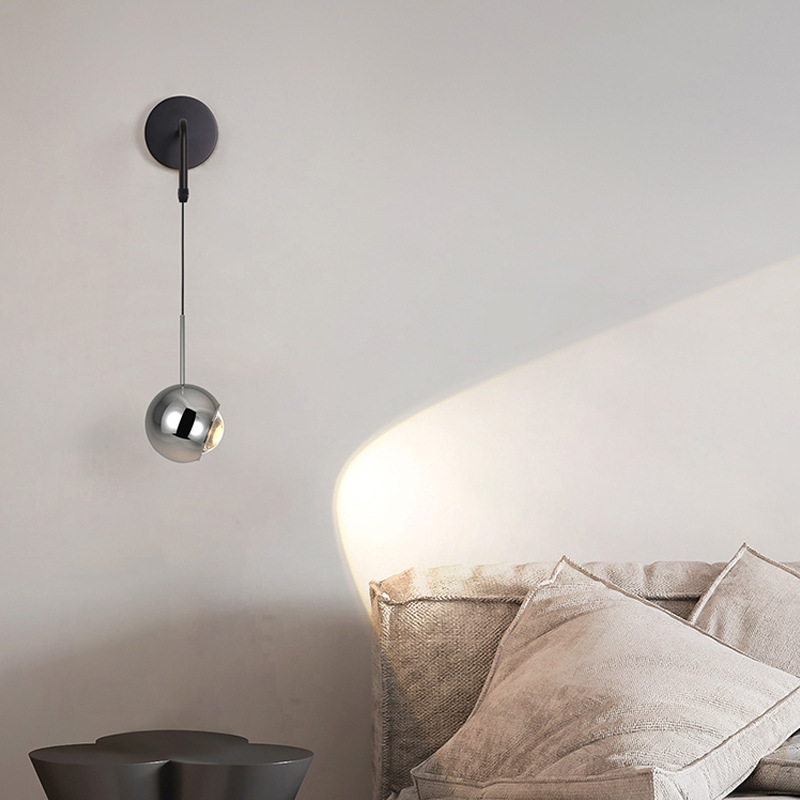Hotel lighting plays a crucial role in creating the right atmosphere and ambiance for guests. It can greatly impact the mood and overall experience of guests, making it an important aspect of hotel design and hospitality. From the moment guests step into the lobby to the time they enter their rooms, lighting sets the tone and creates a welcoming environment. In this article, we will explore the importance of hotel lighting, how it affects guest experience and satisfaction, and provide tips on how to choose the right lighting fixtures for your hotel.
The Importance of Hotel Lighting: Creating the Right Atmosphere for Your Guests
Lighting has the power to transform a space and create a specific atmosphere. In hotels, it is essential to create an environment that is inviting, comfortable, and aesthetically pleasing for guests. The right lighting can enhance the overall experience of guests and leave a lasting impression. Sktong
One of the key ways lighting affects guest experience is through its impact on mood and ambiance. Soft, warm lighting can create a cozy and intimate atmosphere, perfect for relaxation and unwinding after a long day of travel or work. On the other hand, bright and vibrant lighting can energize guests and create a lively atmosphere in common areas such as restaurants or bars.
In addition to setting the mood, lighting also plays a role in guest satisfaction. Adequate lighting in guest rooms is essential for functionality and comfort. Guests should be able to easily navigate their rooms, read or work comfortably, and adjust the lighting to their preferences. Insufficient or poorly designed lighting can lead to frustration and dissatisfaction among guests.
Understanding the Different Types of Lighting and Their Effects on Mood
To create the desired atmosphere in hotels, it is important to understand the different types of lighting and how they affect mood and ambiance. There are three main types of lighting: ambient, task, and accent.
Ambient lighting provides overall illumination to a space. It sets the general mood and brightness level of a room. Soft, diffused ambient lighting can create a warm and inviting atmosphere, while bright ambient lighting can create a more energetic and lively environment.
Task lighting is focused lighting that is used for specific activities such as reading, working, or applying makeup. It provides direct and concentrated light to a specific area. Task lighting should be adjustable and easily accessible for guests to ensure their comfort and convenience.
Accent lighting is used to highlight specific features or objects in a space. It adds depth and visual interest to the overall design. Accent lighting can be used to draw attention to artwork, architectural details, or decorative elements in hotels.
How Color Temperature and Brightness Affect Guest Comfort and Productivity
Color temperature and brightness are important factors to consider when designing hotel lighting. Color temperature refers to the warmth or coolness of light, measured in Kelvin (K). Warm light has a lower color temperature (around 2700K-3000K) and creates a cozy and intimate atmosphere. Cool light has a higher color temperature (around 5000K-6500K) and creates a more energetic and vibrant environment.
The choice of color temperature can greatly impact guest comfort and productivity. In guest rooms, warmer color temperatures are often preferred as they create a more relaxing and comfortable atmosphere. Cooler color temperatures are more suitable for areas where guests need to be alert and focused, such as lobbies or conference rooms.
Brightness is another important factor to consider. The right level of brightness ensures that guests can see clearly and comfortably perform tasks such as reading or working. It is important to strike a balance between providing adequate illumination and avoiding glare or harsh lighting that can cause discomfort.
The Role of Lighting in Enhancing Hotel Amenities and Features
In addition to creating the right atmosphere, lighting also plays a crucial role in enhancing hotel amenities and features. Properly designed lighting can transform ordinary spaces into extraordinary ones, making them more visually appealing and inviting for guests.
For example, lighting can be used to enhance the ambiance of a hotel pool or spa. Soft, underwater lighting can create a serene and relaxing environment, while colorful lighting can add a touch of vibrancy and excitement. Lighting can also be used to highlight architectural features or unique design elements in hotels, such as a grand staircase or a stunning chandelier.
In restaurants and bars, lighting can greatly impact the dining experience. Soft, warm lighting can create an intimate and romantic atmosphere, while bright and vibrant lighting can create a lively and energetic environment. Lighting can also be used to highlight food presentation and create a visually appealing dining experience.
Creative Lighting Ideas to Elevate Your Hotel’s Aesthetic Appeal
To elevate the aesthetic appeal of your hotel, consider incorporating creative lighting ideas into your design. Unique lighting fixtures and designs can make a bold statement and create a memorable experience for guests.
One creative lighting idea is to use decorative pendant lights or chandeliers as focal points in common areas such as lobbies or reception areas. These eye-catching fixtures can add a touch of elegance and sophistication to the overall design.
Another idea is to incorporate LED strip lights into architectural details or furniture pieces. These versatile lights can be used to create interesting patterns or highlight specific areas in a space. For example, LED strip lights can be installed under bar counters or along the edges of steps to create a dramatic effect.
The Benefits of Energy-Efficient Lighting for Your Hotel’s Bottom Line
Energy-efficient lighting not only benefits the environment but also has financial advantages for hotels. By switching to energy-efficient lighting solutions, hotels can significantly reduce their energy consumption and lower their utility bills.
LED (Light Emitting Diode) lighting is one of the most energy-efficient options available today. LED lights use up to 80% less energy than traditional incandescent bulbs and have a much longer lifespan. This means that hotels can save on energy costs and also reduce maintenance and replacement expenses.
In addition to cost savings, energy-efficient lighting can also enhance the overall sustainability and eco-friendliness of a hotel. Many guests today are conscious of their environmental impact and prefer to stay in hotels that prioritize sustainability. By investing in energy-efficient lighting, hotels can attract environmentally conscious guests and improve their reputation.
Choosing the Right Lighting Fixtures for Your Hotel’s Style and Functionality
When choosing lighting fixtures for your hotel, it is important to consider both style and functionality. The lighting fixtures should complement the overall design aesthetic of the hotel while also providing adequate illumination for guests.
Consider the style and theme of your hotel when selecting lighting fixtures. For example, if your hotel has a modern and minimalist design, sleek and contemporary fixtures may be more suitable. On the other hand, if your hotel has a classic or traditional design, ornate and decorative fixtures may be a better fit.
Functionality is also key when selecting lighting fixtures. Consider the specific needs of each area in your hotel and choose fixtures that provide the right level of illumination. For example, in guest rooms, adjustable bedside lamps or reading lights are essential for guest comfort and convenience.
Maintenance Tips for Keeping Your Hotel’s Lighting in Top Condition
Regular maintenance is essential to keep your hotel’s lighting in top condition. Proper maintenance not only ensures that the lighting fixtures are functioning properly but also extends their lifespan, saving you money on replacements.
Here are some best practices for maintaining hotel lighting:
1. Regularly clean light fixtures to remove dust and dirt that can accumulate over time. This will help maintain optimal brightness and prevent any potential fire hazards.
2. Check for any loose connections or damaged wiring. Loose connections can cause flickering lights or even electrical hazards. If you notice any issues, it is important to address them promptly.
3. Replace burnt-out bulbs or malfunctioning fixtures as soon as possible. This will ensure that guests have adequate lighting and prevent any inconvenience or dissatisfaction.
4. Schedule regular inspections by a professional electrician to identify any potential issues or safety hazards. They can also provide recommendations for energy-efficient upgrades or improvements.
The Impact of Lighting on Guest Satisfaction and Loyalty
The impact of lighting on guest satisfaction and loyalty should not be underestimated. Studies have shown that lighting plays a significant role in shaping the overall guest experience and can greatly influence their perception of a hotel.
Properly designed and well-maintained lighting can create a positive and memorable experience for guests, leading to higher satisfaction levels. On the other hand, inadequate or poorly designed lighting can lead to frustration and dissatisfaction among guests, potentially impacting their loyalty and likelihood of returning.
Hotels that prioritize lighting design and invest in high-quality fixtures are more likely to create a positive impression on guests. By providing comfortable and visually appealing lighting, hotels can enhance the overall guest experience and increase the likelihood of repeat visits and positive reviews.
Future Trends in Hotel Lighting: What to Expect in the Years to Come
As technology continues to advance, the future of hotel lighting looks promising. Here are some trends to expect in the years to come:
1. Smart Lighting: The integration of smart technology into lighting systems allows for greater control and customization. Guests will be able to adjust the lighting in their rooms using voice commands or smartphone apps, creating a personalized experience.
2. Human-Centric Lighting: Human-centric lighting takes into account the natural circadian rhythm of humans and adjusts the color temperature and brightness throughout the day to mimic natural light. This can improve guest comfort, productivity, and overall well-being.
3. Sustainable Lighting: As sustainability becomes increasingly important, hotels will continue to invest in energy-efficient lighting solutions such as LED lights. Solar-powered lighting systems may also become more prevalent, reducing reliance on traditional energy sources.
4. Interactive Lighting: Interactive lighting allows guests to engage with their surroundings through lighting effects. For example, guests may be able to change the color or intensity of the lighting in their rooms to create different moods or atmospheres.
Conclusion
Hotel lighting is a crucial aspect of creating the right atmosphere and enhancing guest experience and satisfaction. The right lighting can transform a space, create a welcoming environment, and leave a lasting impression on guests. By understanding the different types of lighting, considering color temperature and brightness, and incorporating creative lighting ideas, hotels can elevate their aesthetic appeal and create a memorable experience for guests. Additionally, energy-efficient lighting not only benefits the environment but also saves hotels money in the long run. By choosing the right lighting fixtures and implementing regular maintenance practices, hotels can ensure that their lighting is in top condition and enhances guest satisfaction and loyalty. As future trends in hotel lighting continue to evolve, hotels that stay ahead of the curve in terms of design and technology will be able to provide an exceptional guest experience.
If you’re interested in learning more about hotel lighting, check out this informative article on Sincerely Savannah’s website: https://www.sincerelysavannah.com/?p=340. It provides valuable insights and tips on how to create the perfect lighting ambiance in hotel rooms. From choosing the right fixtures to utilizing different lighting techniques, this article covers everything you need to know to enhance the guest experience through thoughtful lighting design.





